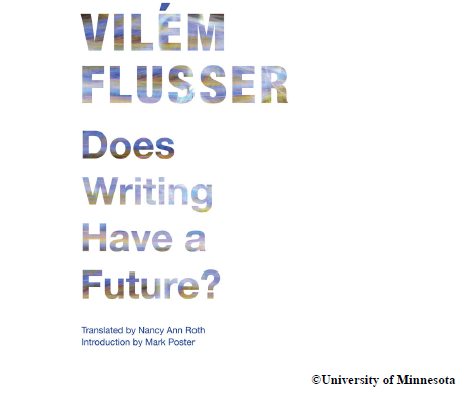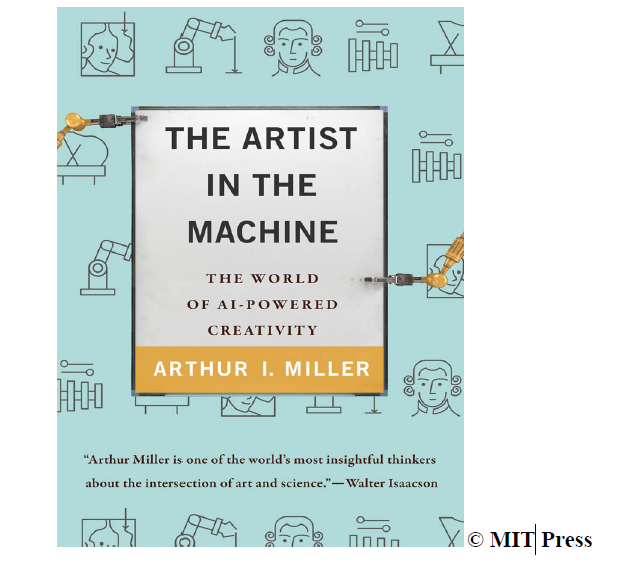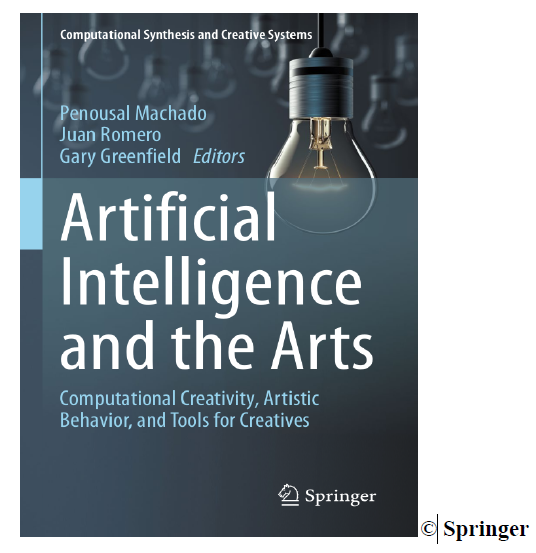Prelude
Up until the recent past, art and creativity were deemed to be the last forte of human ingenuity. The idea that producing a work of art entailed an alchemy of uniquely human elements was pretty much an unquestionable truism. I highly doubt that adherents of this idea can plant their foot as assuredly anymore in the wake of the marvels of AI and Machine Learning. Research in these domains have undoubtedly made leaps and opened up a new minefield of ethical, social, political and personal dilemmas. Longstanding notions of art, artist, text, media and data are being overturned by the inevitable rise of human-machine interaction and collaboration. These readings deal with these changing notions, by taking one across key debates, major developments and rumblings of the future of art in the age of sentient machines. The overarching theme binding these texts together is ‘Creative AI, Its Potentials and Challenges.’
Texts
1. Does Writing Have a Future? – Vilém Flusser, 1987, Translated in 2011.
This book, originally published in 1987, deals with the question of the written word in the age of machines and digital technology. In the course of 21 essays contained in this work, Flusser meditates on the future of writing when it is no longer the primary transmitter of information, superseded by audio, visual, digital medium or a combination of these. He argues that writing entails producing a linearity out of thoughts, and that left to themselves thoughts often go round and round in circles instead of a linear trajectory. He also connects the linearity of the writing process with what he calls the “historical consciousness”, the line connecting past, present and future. When intelligent machines that are better able to produce this linearity appear, writing would either be obsolete or would have to change greatly. I chose this work because of my own reflections on the future of books and publishing, and the role automation in relation to the artist
in a digital world. In the chapters about text and print, he claims that the emphasis on textuality would conclude in automation of text production. According to Flusser, texts depend on being circulated and published to a large audience which can be achieved with utmost efficiency by enlisting the services of digital technology. In addition to this, key roles in publishing would become superfluous as computers and advanced word-processors could achieve the same result. While there is no shortage of counter arguments against Flusser dethroning the written word and placing images and other digital codes in their place, the book would certainly help the readers ponder the implications of a post-literate society beyond the chest-thumping and fear mongering.
2. The Artist in the Machine – Arthur I. Miller, 2019
Arthur Miller explores the creative potential of AI by taking us across machinic forays into art, poetry and music with the expressed purpose of drowning out the paranoia of popular and mainstream discourse surrounding this area. He starts out by defining creativity, and tracing the marks of creativity in human luminaries such as Picasso, Einstein, Shakespeare, Bach etc and eventually demonstrates that we presently have machines displaying many such marks and outperforming humans in a lot of parameters. He also lists many of the ways in which AI could be used to create art: from prompts to generate ideas to reworking of other works of art. While Miller is optimistic about the future of art, he discusses the challenges such as the virtual indistinguishability of human and AI art, and the race to imbue machines with consciousness. I personally gravitate towards this book as a text to be reckoned with because of the various case studies and interviews with scientists and researchers, which are presented candidly. For instance, through the case of the first entirely AI written musical produced by Andrew Lloyd Weber, Miller argues that machines of the present are capable of being as creative as the humans and to shut that out by labeling it dystopian is entirely futile. Students exploring the realm of AI could often find themselves disheartened by the negativity of the
discourse prevalent in many circles. Miller’s book would be the perfect antidote to such doomsday prophecies. Miller achieves this by tracing how technological innovations have always historically preceded the reinvigoration of art and art forms. Aspiring creatives could use this book to acquaint themselves with the possibilities of the present and the opportunities of the future.
3. The Rise of Metacreativity: AI Aesthetics After Remix – Eduardo Navas, 2023
By defining metacreativity as a “cultural variable that emerges when the creative process moves beyond human production to include non-human systems” (Navas 30), Navas takes us across how mechanization has to move beyond relegating repetitive labor to machines in order for them to achieve their complete creative potential. He demonstrates how the concept of labor has already been extricated from art, as culturally we have learned to associate art with spontaneity aka chance{conceived as an algorithm itself}, remix aka variation of a pre-existing object, work or template etc. He envisions artists of the future as someone not just creating an algorithm, but creating a self-modulating program that changes algorithms intelligently to produce the work of art. I am impressed with how using notions of remix and metacreativity, Nuvas is able to create an intricate framework for a posthuman approach to art. He is also able to theorize a radical shift in
aesthetics, giving rise to what he terms ‘AI Aesthetics’, where conception of authorial labor and originality are deemphasized for the conception of ‘co-creation’ or metacreativity. While he concedes that the human creative sphere hasn’t entirely undergone the kind of radical shift he envisions, he is able to speculate masterfully on the nature of a metacreative future. This book in all probability will end up a classic text for researchers working on creative AI and the revolutions which it will surely engender.
4. Artificial Intelligence and the Arts: Computational Creativity, Artistic Behavior, and Tools for Creatives– Edited By Penousal Machado • Juan Romero Gary Greenfield, 2021.
An excellent inventory of recent trends, innovations, applications, challenges and opportunities for Human-AI collaboration, this book acts as a guidebook of sorts to researchers and practitioners of creative arts. Divided into 5 parts covering the length and breadth of arts: ranging from visual arts to music and literary arts, the book systematically takes us across theoretical paradigms endemic to the field, AI led research in the field and the paradigmatic shift that it brings about. When it comes to introducing the AI models and solutions that researchers have developed, the volume is very extensive, and goes into great detail about the features and potential upgrades. For instance, the chapter titled ‘Computational Models of Narrative Creativity’ contributed by Pablo Gervás starts by discussing Fabula, Discourse and Text and elaborates why computational approaches to creating narratives often fail due to difference in approach. “Computers generally apply a single specific AI technique to these problems, Whereas humans seem to combine several cognitive abilities into the task” (Machado et al. 209). Then it
evaluates existing systems that generate narratives, such as TALE-SPIN, AUTHOR, UNIVERSE, FABULIST, IRIS, OPIATE, BRUTUS, MEXICA, MINSTREL, SCHEHERAZADE, STORYBOOK and many others. I believe that the book greatly illuminates vast areas of the Creative AI field that often seem technical, inaccessible and esoteric to an interdisciplinary researcher or an artist. The chapter mentioned above has certainly offered me the much needed impetus to take note of innovations in Draft and Proto-Literary generation tools. Each part of the extensive bibliography offers a point of departure and exploration, and serves as an indispensable guide to any enthusiast.
Works Cited
Flusser, Vilém. Does Writing Have a Future? University of Minnesota Press, 2011.
Machado, Penousal, et al., editors. Artificial Intelligence and the Arts: Computational Creativity, Artistic Behavior, and Tools for Creatives. Springer International Publishing, 2021.
Miller, Arthur I. The Artist in the Machine: The World of AI-Powered Creativity. Penguin Random House LLC, 2019.
Navas, Eduardo. The Rise of Metacreativity: AI Aesthetics After Remix. Routledge, 2023.







Recent Comments